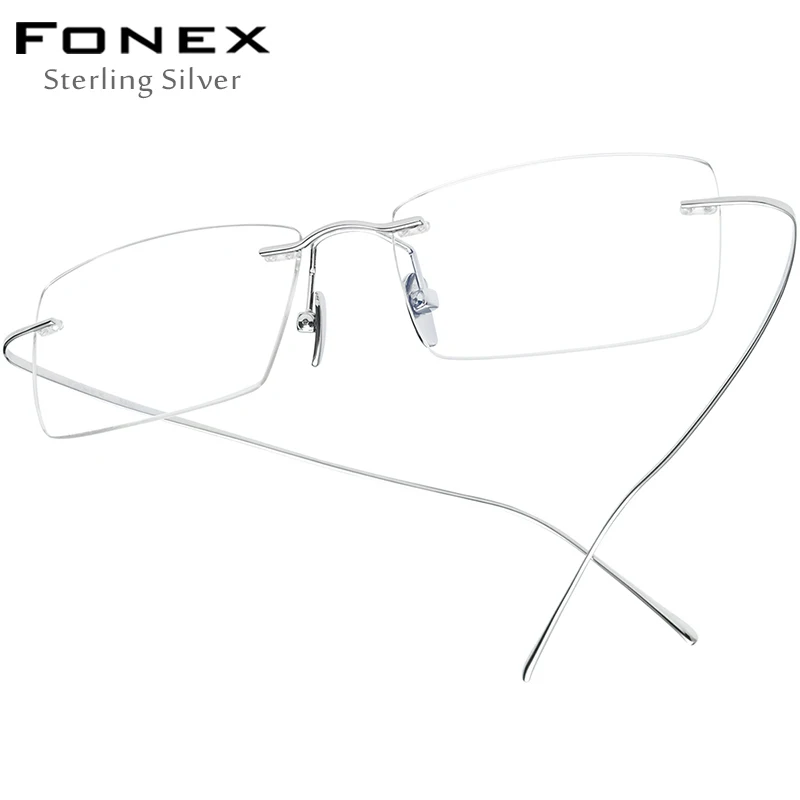
Medieval leisure chair solid wood leather simple chair retro single household light luxury sofa chair
Price: USD 376.99 - USD 380.80Category: Furniture Accessories
Shop now and enjoy exclusive discounts! Medieval leisure chair solid wood leather simple chair retro single household light luxury sofa chair. Experience the quality Furniture Accessories!

"Tools Frying Pan 11"""
Price: USD 179.48 - USD 381.87Category: Kitchen,Dining & Bar
Shop now and enjoy exclusive discounts! "Tools Frying Pan 11""". Experience the quality Kitchen,Dining & Bar!

Minimalist bedside table, simple modern light luxury Italian high-end high-end storage side cabinet
Price: USD 324.87 - USD 382.20Category: Home Furniture
Shop now and enjoy exclusive discounts! Minimalist bedside table, simple modern light luxury Italian high-end high-end storage side cabinet. Experience the quality Home Furniture!

FONEX Sterling Silver S800 Glasses Frame Men Luxury Brand Design Rimless Eyeglasses Frameless Austria Ultralight Eyewear S001
Price: USD 193.80 - USD 380.00Category: Eyewear & Accessories
Shop now and enjoy exclusive discounts! FONEX Sterling Silver S800 Glasses Frame Men Luxury Brand Design Rimless Eyeglasses Frameless Austria Ultralight Eyewear S001. Experience the quality Eyewear & Accessories!

EVLAST Customized Sparkly Navy Blue Quinceanera Dress Ball Gown Gold Lace Applique Beading Sweet 16 Vestido De 15 Anos E1Q516
Price: USD 259.80 - USD 382.06Category: Special Occasion Dresses
Shop now and enjoy exclusive discounts! EVLAST Customized Sparkly Navy Blue Quinceanera Dress Ball Gown Gold Lace Applique Beading Sweet 16 Vestido De 15 Anos E1Q516. Experience the quality Special Occasion Dresses!

DATOUBOSS 12V100AH Lithium Battery Nominal 1280W LiFePO4 Solar Portable Rechargeable Deep Cycle Energy Storage Power Supply
Price: USD 191.24 - USD 382.48Category: Accessories & Parts
Shop now and enjoy exclusive discounts! DATOUBOSS 12V100AH Lithium Battery Nominal 1280W LiFePO4 Solar Portable Rechargeable Deep Cycle Energy Storage Power Supply. Experience the quality Accessories & Parts!

Paulkison Audio Processor CX4800 Professional Audio Processor Sound Equipment 96khz Sampling Rate DSP Audio Processing
Price: USD 346.56 - USD 380.83Category: Portable Audio & Video
Shop now and enjoy exclusive discounts! Paulkison Audio Processor CX4800 Professional Audio Processor Sound Equipment 96khz Sampling Rate DSP Audio Processing. Experience the quality Portable Audio & Video!

Flyover portable lithium battery Tube expander tool VEF-1 Copper Tube expander Fast electric tube expansion
Price: USD 323.08 - USD 380.10Category: Metal Processing Equipment & Accessories
Shop now and enjoy exclusive discounts! Flyover portable lithium battery Tube expander tool VEF-1 Copper Tube expander Fast electric tube expansion. Experience the quality Metal Processing Equipment & Accessories!
